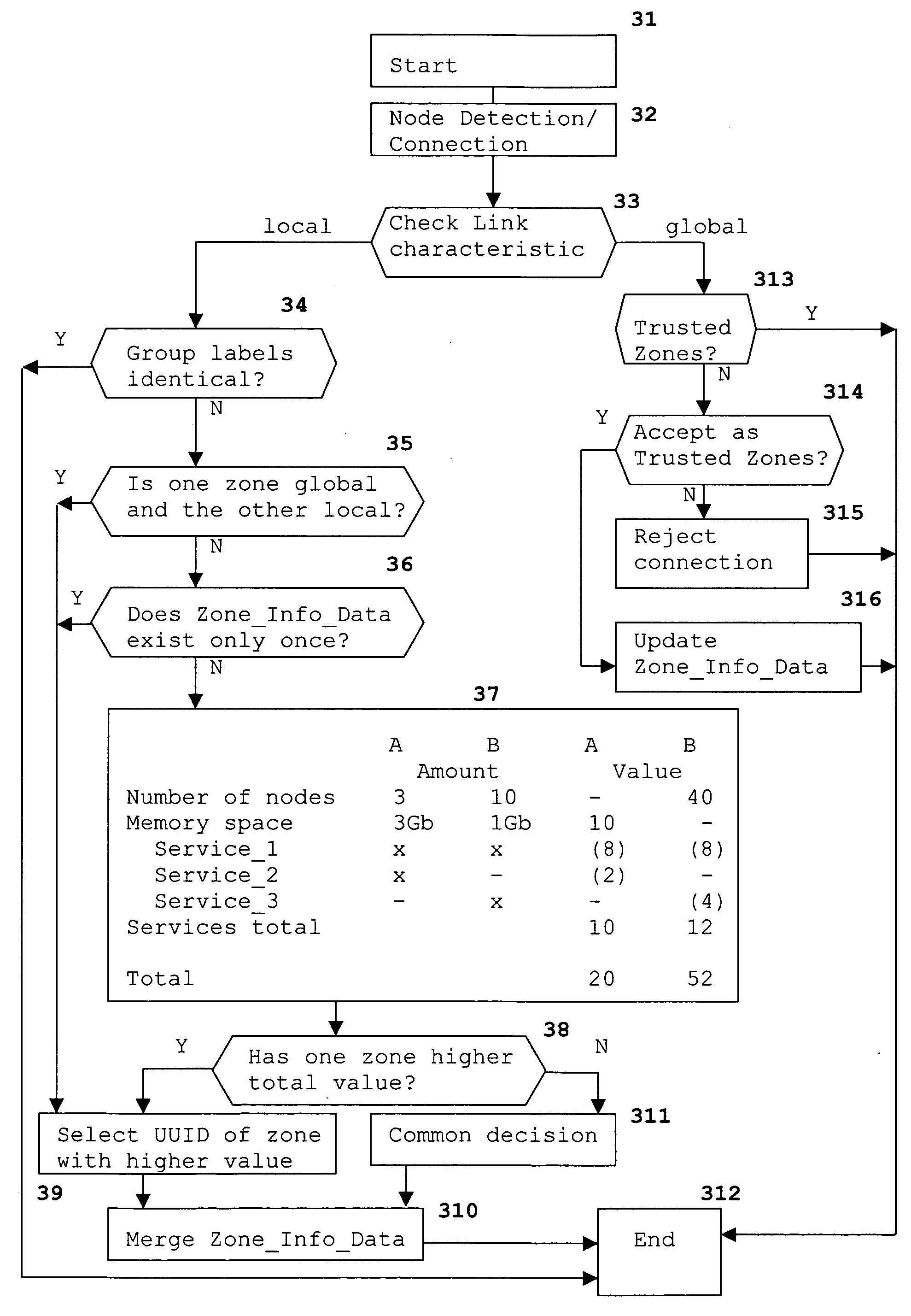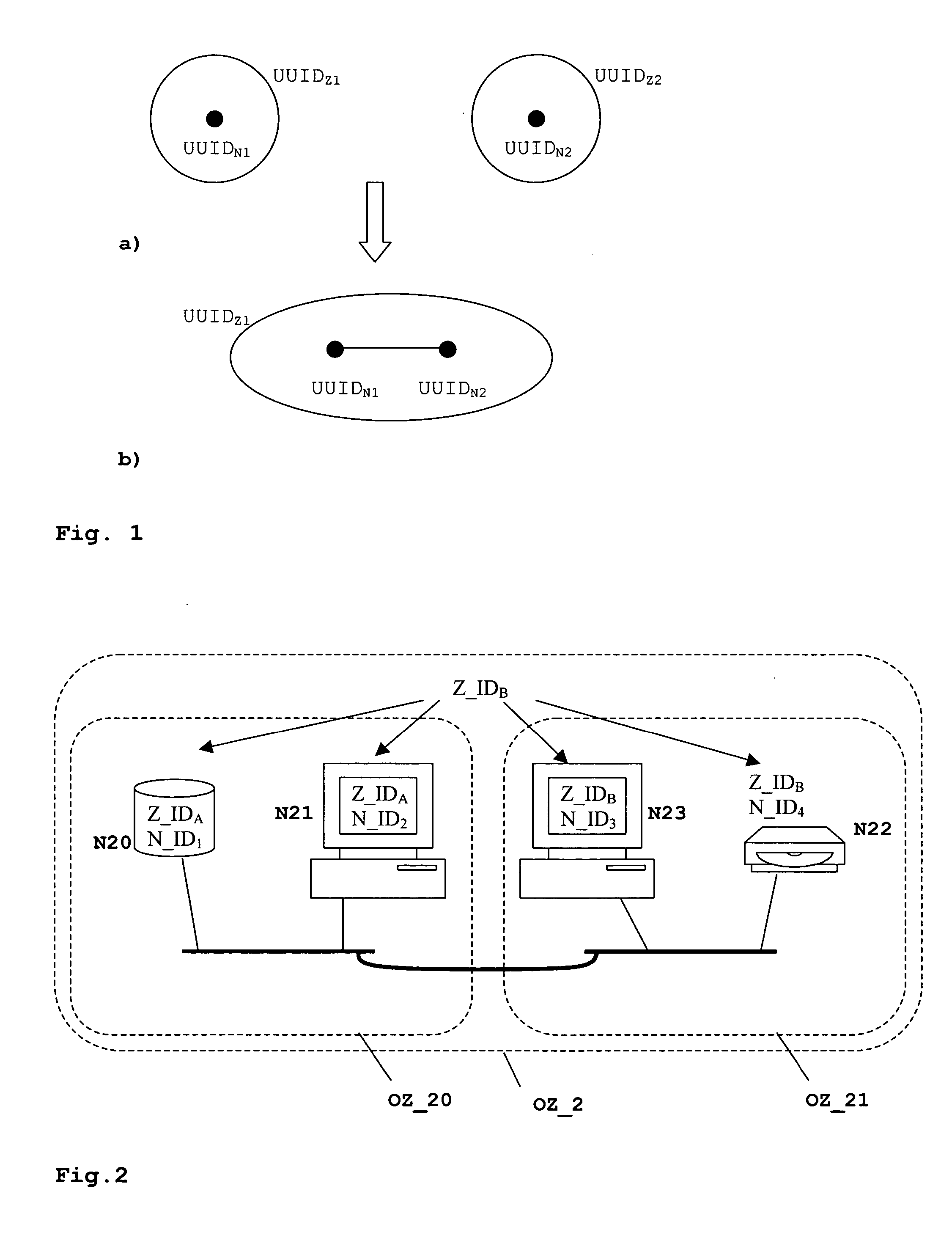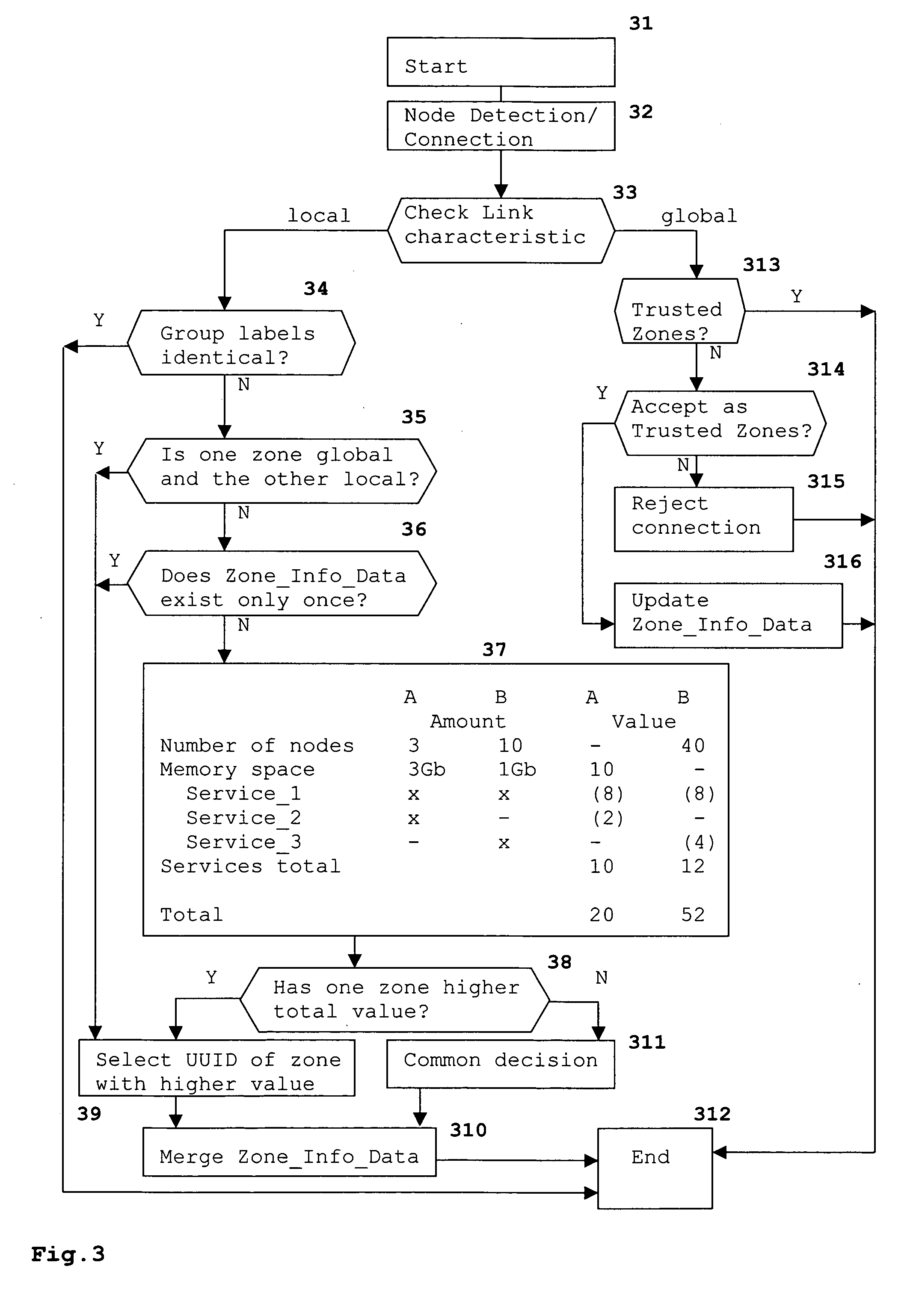Method for assigning an identifier to a peer-group in a peer-to-peer network
a peer-to-peer network and peer-to-peer technology, applied in the field of peer-to-peer network identification label selection, can solve the problem of high amount of administrational data traffic, and achieve the effect of reducing network traffic and administrational activities and high durability
- Summary
- Abstract
- Description
- Claims
- Application Information
AI Technical Summary
Benefits of technology
Problems solved by technology
Method used
Image
Examples
Embodiment Construction
[0021]FIG. 1a) shows two nodes of a peer-to-peer network, being labeled UUIDN1 and UUIDN2 respectively. The nodes belong to different OwnerZones, and thus have associated individual group labels UUIDZ1, UUIDZ2. Therefore they may generally not communicate with each other. When the nodes are physically connected to each other, as shown in FIG. 1b), the users of the respective OwnerZones may be prompted about whether they want to merge their OwnerZones. In another embodiment of the invention the respective users are not prompted, but may explicitly call a service for this purpose. Thus a common OwnerZone may be created, which requires assigning a common group label to the nodes. Using the inventive method allows the nodes to select autonomously such a group label.
[0022] Particularly, one of the existing group labels UUIDZ1, UUIDZ2 is used as common group label. The nodes may periodically send messages, thus detecting each other soon. The communicating nodes UUIDN1, UUIDN2 are the neg...
PUM
 Login to View More
Login to View More Abstract
Description
Claims
Application Information
 Login to View More
Login to View More - R&D
- Intellectual Property
- Life Sciences
- Materials
- Tech Scout
- Unparalleled Data Quality
- Higher Quality Content
- 60% Fewer Hallucinations
Browse by: Latest US Patents, China's latest patents, Technical Efficacy Thesaurus, Application Domain, Technology Topic, Popular Technical Reports.
© 2025 PatSnap. All rights reserved.Legal|Privacy policy|Modern Slavery Act Transparency Statement|Sitemap|About US| Contact US: help@patsnap.com



